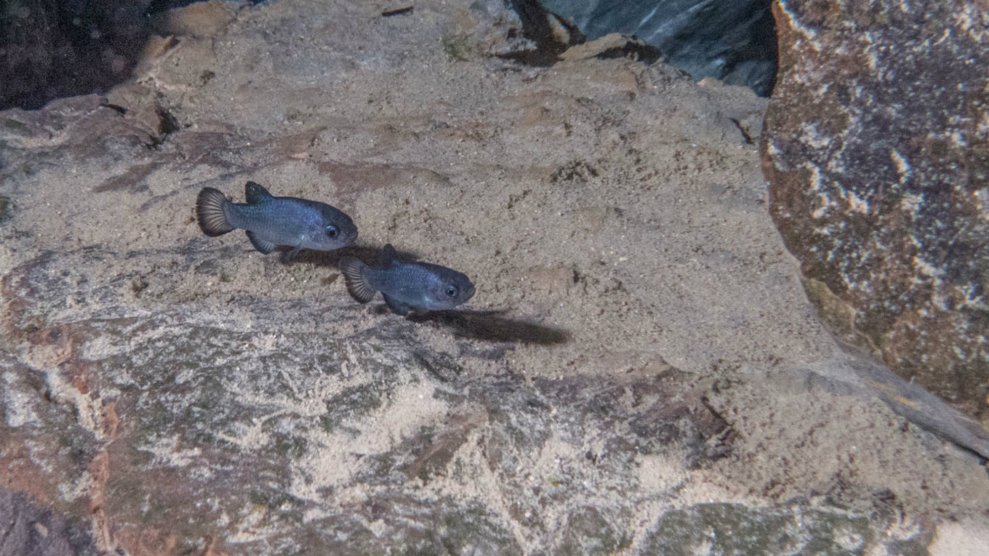
Mother Jones illustration; Getty
In June, Texas authorities installed the first segment of an anti-migrant floating barrier in the Rio Grande, the 1,900-mile waterway separating the state’s southwest from northern Mexico. The structure, which consists of metal saw blades strung between large buoys, sits along a thousand-foot stretch of the river near Eagle Pass, a busy crossing point on the Texas border. It’s become a centerpiece of Gov. Greg Abbott’s Operation Lone Star, a billion-dollar initiative to clamp down on immigration in the state. Despite warnings that the buoys would endanger migrants in this particularly turbulent section of the river, where drownings are common, Abbott has said he’ll “continue to deploy every strategy” to keep migrants out.
The following month, after the governor refused a Justice Department request to take down the barrier, the Biden administration sued Abbott and the state, arguing that Texas had no authority to obstruct the Rio Grande and that the buoys posed “serious risks to public safety and the environment.” On September 6, a federal judge ordered Abbott to take down the barrier until the legal dispute was resolved. Texas immediately challenged that order in the conservative Fifth Circuit Court of Appeals, which allowed the buoys to stay for the moment.
But the Biden administration has also introduced a couple of unexpected players to the contest: two rare species of freshwater mussels.
On the same day the DOJ filed its suit, the US Fish and Wildlife Service proposed adding the Salina mucket and Mexican fawnsfoot—mussel species whose Rio Grande habitats overlap with Abbott’s marine barrier—to the list of plants and animals protected by the Endangered Species Act, the 1973 statute that protects imperiled species and ecosystems.
If the mussels are listed as endangered, Texas would be prohibited from “taking” the species—essentially, doing anything to kill or harm them. Their homes in the Rio Grande would also be deemed “critical habitat” essential for their continued survival. If that happens, any federal action that could threaten the habitat would require Fish and Wildlife approval.
While that wouldn’t directly stop Texas, it could tie the hands of the Army Corps of Engineers, which the Biden administration says needs to authorize the buoys. A judgment by Fish and Wildlife that the barrier hinders water flow that the mussels need to survive, for example, would prevent the Corps from issuing a permit.
The mussels are an unassuming pair, clad modestly in dark brown and pale gold. From far away, they look like small rocks on the river floor. But they play a crucial role in purifying the Rio Grande, churning gallons of water through their gills each day to filter out algae and bacteria. Experts have warned for years that the species were dying at alarming rates, especially as pollution and marine structures like dams have reduced flows of clean water. Today, only a few hundred Salina muckets and Mexican fawnsfoots are estimated to remain. For both mollusks, this stretch of the Rio Grande is now their only home.
“Dams, pollution and habitat destruction have brought these Texas mussels to the brink of extinction,” said Michael Robinson, a senior conservation advocate at the Center for Biological Diversity, in a statement. “Endangered Species Act protection gives these mussels a shot at survival and recovery while at the same time improving the health of the Rio Grande.”

A Texas Department of Public Safety airboat patrols the Rio Grande River south of Eagle Pass where a 1000-foot string of buoys has been placed in the river to deter crossing the Rio Grande River into Texas.
Bob Daemmrich/Zuma
The Endangered Species Act has been used to fight politically controversial projects since its inception. The iconic case came in 1978, when the ESA was first brought before the Supreme Court to challenge a federal dam-building project in eastern Tennessee. The Tellico Dam was deeply contentious from the start: it meant seizing hundreds of families’ lands through eminent domain to fill a reservoir that would submerge Cherokee burial grounds and vast tracts of farmland.
Protests didn’t stop the dam, but a three-inch fish—the snail darter—almost did. When the Interior Department listed the darter as endangered, a law student named Hiram Hill saw an opportunity to challenge the project under the still-new ESA. In doing so, he sought support from local farmers who wanted to save their land. Hill’s suit went all the way to the nation’s highest court, and in an extraordinary win, the Court ordered a halt on the Tellico’s construction. The dam was eventually completed anyway, after a Tennessee senator used an appropriations bill to exempt it from ESA protection. But a precedent for the new law had been established.
Some wondered if the plaintiffs were just wielding the tiny fish to quash a development they disliked. “The snail darter was discovered, and became a handy handle to hold onto,” Chief Justice Warren Burger remarked during oral arguments in the case. “I’m sure that they just don’t want this project.”
But scientists and legal experts say that endangered species determinations are based on careful research, not politics. “The listing process for the Endangered Species Act is incredibly science-based,” says Jacob Carter, a research director at the Union of Concerned Scientists. “It is one of the only pieces of legislation where the decisions have to be based solely on science, and not political considerations.”
“Listing a species is a long, drawn-out process,” agrees Dave Owen, an environmental law professor and associate dean at the University of California College of the Law, San Francisco. “Usually, the species is studied for potential listing over a period of many months or years. It’s not something that the Fish and Wildlife Service just does on a dime.”
It’s true that the Interior Department has had the mussels on its radar for years, finding substantial evidence in 2009 to support an endangered species designation. The agency never took the next steps, likely due to resource constraints that drive long wait times for hundreds of other candidates. In 2020, the Center for Biological Diversity sued the department for failing to move forward on 231 endangered species assessments—including both mussels. Under the terms of a settlement, the agency has started working through its backlog.
If people doubt the integrity of the listing process, Owen worries that they won’t take conservation seriously. “There’s already this narrative out there that the statute is just this sort of tyrannical exercise of government power,” he says, which makes agencies “reluctant to come down heavy on the projects that really do deserve it.”
Among the ESA’s critics, tyranny is a popular refrain. Earlier this year, when Fish and Wildlife proposed to list the dunes sagebrush lizard as endangered, GOP politicians and oil and gas industry leaders characterized the move as a White House attempt to shut down drilling and fracking projects in the oil-rich Permian Basin.
“Biden is weaponizing a lizard against the livelihoods of Texans to destroy an entire industry and our nation’s energy security—and tainting the intent of the Endangered Species Act,” wrote Rep. August Pfluger (R-Texas) in a statement.
Many of the lawmakers supporting Abbott’s barrier say the same. “While Biden has failed to use federal powers to secure the border, he has no problem weaponizing the government to prevent states from doing so,” said Rep. Jodey Arrington, another Texan in Congress, who also criticized the recent listing of a prairie chicken as a ploy to stop drilling. Abbott, he said, “should pay no attention to Biden’s shell game.”
There’s still a long way to go before the Rio Grande mussels are officially deemed endangered. A public comment period on the proposal just ended, but the final decision could take a year or more. Even if the mussels do make it onto the list, Owen is skeptical that it would stop Abbott. The governor insists he doesn’t need federal approval for the buoys, and if anyone tries to sue Texas directly, they’ll need to prove that the barrier harms the creatures. Such suits “are really rare,” Owen says, “because they’re hard to win.”
But even if a showdown between Abbott and the mollusks doesn’t happen soon, listing them could lead to added protections for this region of the Rio Grande, laying better groundwork to challenge the harms of harsh border enforcement—both environmentally and in human terms. In this sense, listing the mussels could help “undo some of the damage that Abbott’s doing,” says Noah Greenwald, the Center for Biological Diversity’s endangered species director.
“What Governor Abbott is doing is incredibly cruel and tragic for people who are in a desperate situation,” says Greenwald, “and is also harmful to the river itself.”













